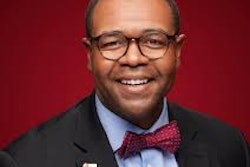In the study of economics, the relationship between inflation and market correction is complex and interesting. Recently, I have found myself studying this relationship to understand what has been occurring in higher education and what realities are on the horizon – and for me, this is all starting to make sense. According to the Federal Reserve, inflation is a rise in the price of goods and services. According to Nasdaq, a market correction is a relatively short-term drop in stock market prices, generally viewed as bringing overpriced stocks back to a level closer to companies' actual values. To begin understanding the relationship between these two variables, it is crucial to understand that, while inflation does not directly correlate to a market correction, combined with other critical factors such as economic slowdown and political instability, it can lead to a market correction. Now, let’s apply these concepts to higher education.
The rise of higher education and cost of attendance inflation
Historically, in the United States, the growth of institutions of higher education (IHEs) has been directly related to the increase in population. According to the U.S. Census Bureau, America’s residents had grown more than 145% after World War II and the Vietnam War. Subsequently, to support economic growth occurring in the country, the number of IHEs in the country ballooned from more than 500 institutions, during the 1869-1870 school year, to more than 3,000 by the end of the 1980s, according to the National Center for Education Statistics (NCES). Along with the increase in the number of institutions came the increase in the cost of college attendance. The NCES reported that the tuition, fees, room, and board rate between 1980 and 2020 rose 180%. As the cost of attendance has increased over time, the reduction in state funding for higher education has declined. According to the National Education Association, between 2020 and 2021, state funding for higher education declined in 37 states by an average of 6%. Consequently, IHEs developed a dependency on higher tuition costs to make up for state funding declines. Broadly speaking, rather than institutions proactively addressing this “cost of attendance inflation” by reducing their operational costs, the financial livelihoods of students were placed on the back burner, and campus expenses increased while students racked up loans to the tune of $1.727 trillion in total as of the first quarter of 2024.
 Dr. Mordecai Ian Brownlee
Dr. Mordecai Ian Brownlee
According to the U.S. Department of Education's Postsecondary Education Participants System, nearly 12,000 college campuses, accounting for more than 460 IHEs, closed between July 2004 and June 2020. In their analysis of these closures, the State Higher Education Executive Officers Association (SHEEO) determined that 49.9%, or 233, were from the private, for-profit two-year sector; 28.1%, or 131, occurred from the private for-profit four-year sector; 17.8%, or 83, came from the private, nonprofit four-year sector; and 4.3%, or 16, were private, nonprofit two-year, and four were public four-year institutions. For the sake of this article, it could be stated that these closures reflected the higher education sector beginning to correct itself by addressing the bloat of for-profit IHEs in the national market.
Shortly after the World Health Organization (WHO) declared the coronavirus (COVID-19) outbreak a global pandemic on March 11, 2020, the U.S. government sprang into action to save its higher education system. On March 27, 2020, Congress passed The Coronavirus Aid, Relief, and Economic Security Act, or CARES Act. This bill allotted $2.2 trillion, and approximately $14 billion was given to the Office of Postsecondary Education as the Higher Education Emergency Relief Fund, or HEERF. The program had three phases of funding: HEERF I, HEERF II, and HEERF III, with the final disbursement under HEERF III on July 13, 2022. As the U.S. Department of Education indicated, most HEERF grant performance periods were scheduled to end on June 30, 2023. Consequently, the 2023-2024 school year for many IHEs was the first school year without this federal financial lifeline to support institutional revenue losses. An analysis conducted by the Chronicle of Higher Education determined that tuition revenue fell at 61% of IHEs during the pandemic.
Factors affecting the future of higher education
According to an analysis of federal data by SHEEO, at least 30 colleges closed their only or final campus in the first ten months of 2023, including 14 nonprofit colleges and 16 for-profit colleges. As for 2024, in April, the University of Saint Katherine and Wells College in Aurora announced they would be closing their doors. According to EAB analysis, by 2040, 566 colleges are expected to see a 25% decline, and 247 are expected to see a 50% decline. Is inflation to blame? Absolutely not, at least not by itself. America is aging – rapidly. The number of Americans 65 and older is projected to more than double by 2040. Furthermore, the U.S. Census Bureau projects that the U.S. population will be 355 million in 2040, which is 25 million fewer than projected in 2015. These demographic shifts will subsequently impact population density, local and state taxation, politics, workforce, educational preferences, and numerous other factors.
In closing, the truth may be that too many IHEs exist today, and continued closures are on the horizon. Rather than colleges and universities seeking leaders to guide their institutions through times of prosperity, governance bodies will shift towards identifying those who can lead their institutions through disruption, decline, and disparity. As with financial market corrections, while damaging in the short term, a correction can be positive. It is imperative that institutions continuously re-evaluate their missions, strategic plans, and key performance indicators to ensure market relevance and sustainability. Failure to do so will lead to shuttered doors and silenced legacies.
Dr. Mordecai Brownlee is the president of Community College of Aurora.



















